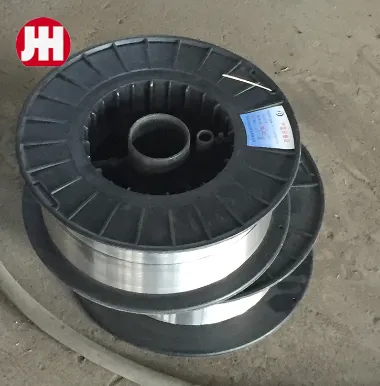Discover the Power and Efficiency of Flux Cored Welding Wire
In the evolving welding industry, consumables like flux cored welding wire have revolutionized the way welders approach metal joining. These wires combine the benefits of flux and wire electrodes, enabling high-quality welds with improved productivity and reduced need for external shielding gas. From heavy fabrication to on-site repairs, flux welding wire provides versatile solutions tailored to demanding environments. Understanding the distinctions and advantages of cored welding wire and gasless welding wire helps professionals select the right consumable that balances cost, quality, and convenience. This article explores the core features and benefits of these welding wires and highlights why flux core welding wire for sale is a valuable addition to your welding inventory.

The Advantages of Using Flux Cored Welding Wire in Modern Welding
Flux cored welding wire consists of a metal sheath surrounding a flux-filled core, designed to protect the molten weld pool from contamination and improve weld quality. One of its key benefits is enabling welding without the constant need for external shielding gases, especially in outdoor or windy conditions where gas shielding is problematic.
This wire type produces deep penetration, excellent mechanical properties, and superior slag coverage, making it ideal for heavy-duty and structural welding projects. The flux within the core actively cleans the weld zone and contributes to improved bead appearance and reduced spatter, minimizing post-weld cleanup.
Thanks to advancements in wire chemistry, today's flux cored welding wire is compatible with automated and semi-automated welding machines, increasing productivity on the shop floor. Its versatility in handling thick sections and poor fit-up conditions makes it invaluable in shipbuilding, construction, and pipeline industries.
Key Features and Applications of Flux Welding Wire
The term flux welding wire broadly refers to any welding wire that contains flux material, including self-shielded and gas-shielded variants. This wire offers a controlled welding process where the flux generates protective gases and slag during welding, eliminating or reducing the need for external shielding.
This wire type is popular for welding carbon steel, stainless steel, and other alloys, offering reliable joint integrity and high deposition rates. The protective slag layer formed by the flux prevents oxidation and improves weld toughness.
Industries utilizing flux welding wire benefit from its ability to weld in various positions and challenging environments. Whether fabricating heavy machinery, performing maintenance in the field, or constructing large steel structures, flux welding wire delivers consistent results with excellent mechanical strength.
Understanding the Role of Cored Welding Wire in Enhancing Weld Quality
Cored welding wire improves upon traditional solid wire electrodes by incorporating flux or alloying elements inside the wire’s core. This design enhances arc stability, weld pool control, and metallurgical properties of the deposited weld.
Compared to solid wire, cored welding wire provides better tolerance to contaminants and variable fit-up conditions. It can produce higher quality welds with less preparation and is particularly effective for welding thicker materials and out-of-position joints.
With various formulations available, including stainless steel, low hydrogen, and high strength alloys, cored welding wire adapts to diverse applications. Its use in automated welding systems also supports higher deposition rates and improved overall efficiency.
The Benefits of Gasless Welding Wire for Outdoor and Field Welding
Gasless welding wire refers to self-shielded flux cored wires that do not require an external shielding gas. This feature makes them ideal for outdoor work where wind or weather conditions make gas shielding impractical.
Using gasless welding wire simplifies setup and reduces equipment costs, as no gas tanks or regulators are necessary. It provides excellent penetration and produces strong, durable welds with good slag coverage.
Though the slag removal process requires attention, gasless welding wire offers portability and versatility, enabling welders to perform high-quality welds in remote locations, shipyards, and construction sites without compromising weld integrity.
Flux Core Welding Wire FAQs
What distinguishes flux cored welding wire from solid welding wire?
Flux cored welding wire contains a flux-filled core within the wire, providing shielding and cleaning during welding. This allows it to weld without external shielding gases in many cases, offering better performance on dirty or rusty surfaces and improving penetration and bead quality compared to solid wire, which relies on external gas for protection.
Can flux welding wire be used in all welding positions?
Yes, many types of flux welding wire are designed for use in flat, horizontal, vertical, and overhead positions. The flux core’s slag and gas generation help stabilize the arc and protect the weld pool, enabling consistent weld quality in various orientations.
What are the advantages of cored welding wire in automated welding?
Cored welding wire allows for higher deposition rates and improved arc stability compared to solid wire, which enhances productivity in automated welding processes. The flux core provides self-shielding, reducing the need for complex gas delivery systems and supporting continuous, efficient welding cycles.
Why choose gasless welding wire for field repairs?
Gasless welding wire is ideal for outdoor or remote welding tasks where shielding gas is impractical due to wind or lack of equipment. It offers portability, ease of use, and robust welds without the complexity of gas setups, making it perfect for construction, ship repair, and pipeline maintenance.
Where can I find reliable flux core welding wire for sale?
Reputable industrial suppliers and manufacturers offer high-quality flux core welding wire for sale with certifications that meet industry standards. Choosing a supplier with proven experience ensures product consistency, technical support, and compliance with your specific welding requirements.
-
What is a medium-frequency pulse? What types of welding are suitable for?NotíciasNov.24,2025
-
Why is the overall cost of CO2 welding lower than that of shielded metal arc welding?NotíciasNov.21,2025
-
Welding Knowledge 6NotíciasNov.20,2025
-
What is a low-frequency pulse? What types of welding are they suitable for?NotíciasNov.19,2025
-
Why are the weld joints from CO₂ gas shielded welding of such high quality?NotíciasNov.18,2025
-
J506 Welding Rod - Low Hydrogen, All-Position, AC/DC E7016NotíciasNov.17,2025


